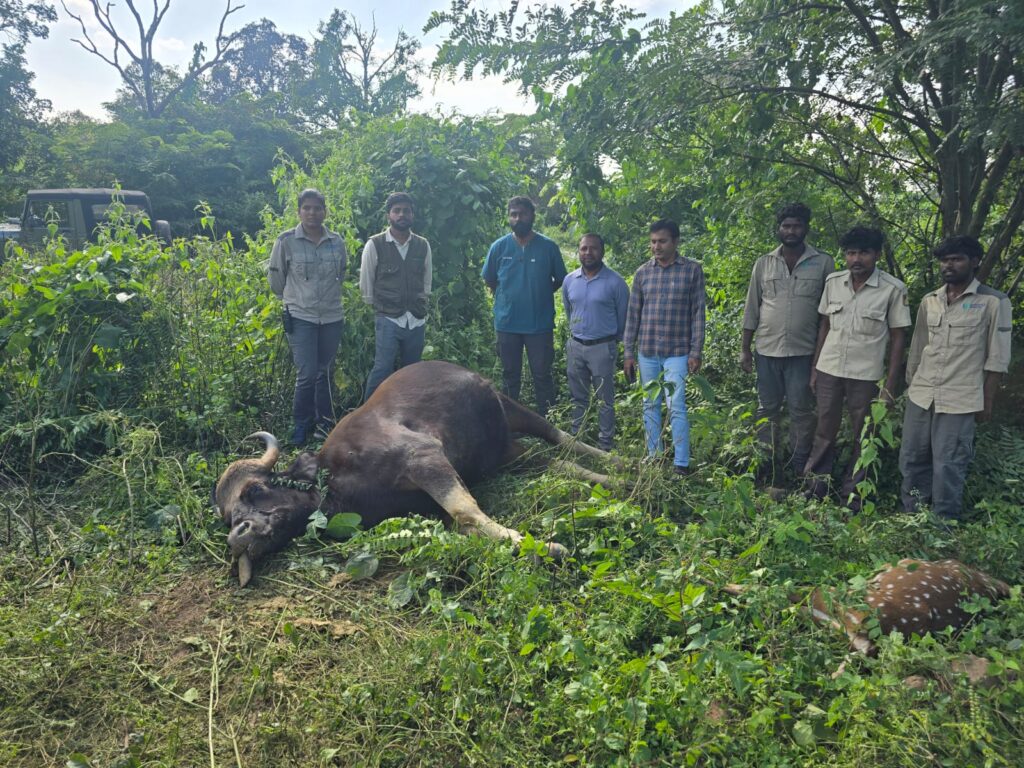
Meera Bhardwaj:
The recent death of a pregnant Indian Gaur that was darted at Bannerghatta Zoo has sent shock waves in Bengaluru. Wildlife organizations and activists have submitted a complaint to the Forest, Ecology and Environment Minister Eshwar Khandre citing severe negligence on the part of forest officials and the Bannerghatta Zoo Vet who were involved in darting a pregnant Indian Gaur. In this darting operations, a deer was also killed along with the gaur and its calf.
The Post-mortem report is out which is yet to be made public. And it clearly reveals the blunder committed by the Vet of BBP, Dr Anand in darting a pregnant Indian Gaur which was in its last trimester. All existing rules mandate – No darting of pregnant species can be done but how could the Bannerghatta Biological Park (BBP), also known as Bannerghatta Zoo authorities commit such a big blunder is unbelievable?
This incident took place in the Bannerghatta Zoo (BBP), Bengaluru on October 31st. A female and male Indian Gaur was taken up for darting operations in the safari area of BBP and its relocation under an animal exchange program with the Nehru Zoological Park, Hyderabad.
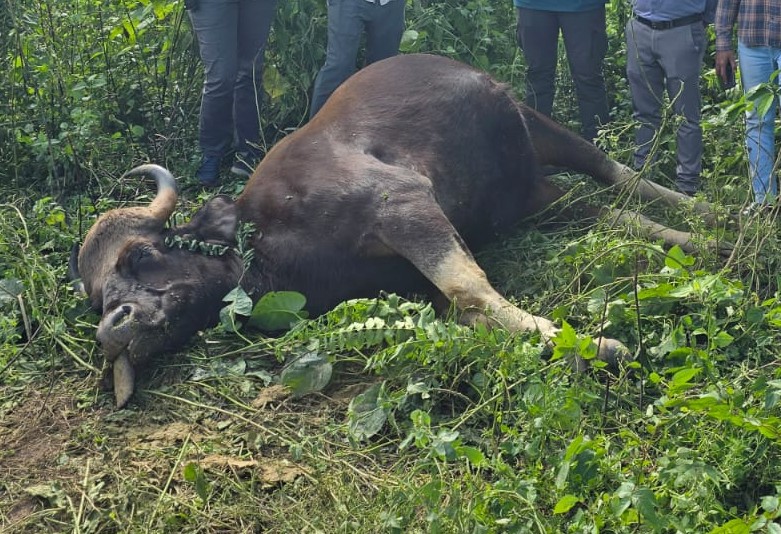
NEGLIGENCE OF BBP AUTHORITIES
Sources in BBP say the operation for darting was taken up in the morning and it was done using 40 ml of Ketamine (anesthetic drug). At 11am, the Gaur displayed severe symptoms of distress and it reportedly collapsed and died during the operations. All attempts to revive this heavily pregnant Indian Gaur failed.
As per a statement from BBP authorities, the capture and relocation operation followed all standard operating procedures and was supervised by veterinary and forest officials. “They described the death as an accidental death. A post-mortem examination was conducted to determine the exact cause of death.” The post-mortem report came on November 3rd but the contents of the report has not been made public.

COMPLAINT SUBMITTED TO ESHWAR KHANDRE
Submitting a complaint to the Forest Minister, D S Kiran Kumar, founder-president, Green Army Force, Bengaluru has demanded an impartial inquiry into the incident.
Speaking to Green Minute News, he said, “An inquiry should be done immediately as they are trying to erase all the photo and video evidences of the darting operations that took place on 31st. Over dosage of tranquillizers must have led to the death of gaur as also a deer during the operations that was done by Dr Anand under the supervision of the BBP director.”
Kiran Kumar questioned, “Now how could they dart a heavily pregnant gaur which is illegal under Wildlife Protection Act and Central Zoo Authority Rules. In fact, they have caused the death of three animals – not only the mother gaur but also its 8-month-old calf and also a deer. Further, they are refusing to share the post-mortem report to shield the ineptitude of the inexperienced vet. The Indian Gaur, yet to be born calf and a deer have died due to negligence of the BBP authorities and they should be suspended till an inquiry is completed.”
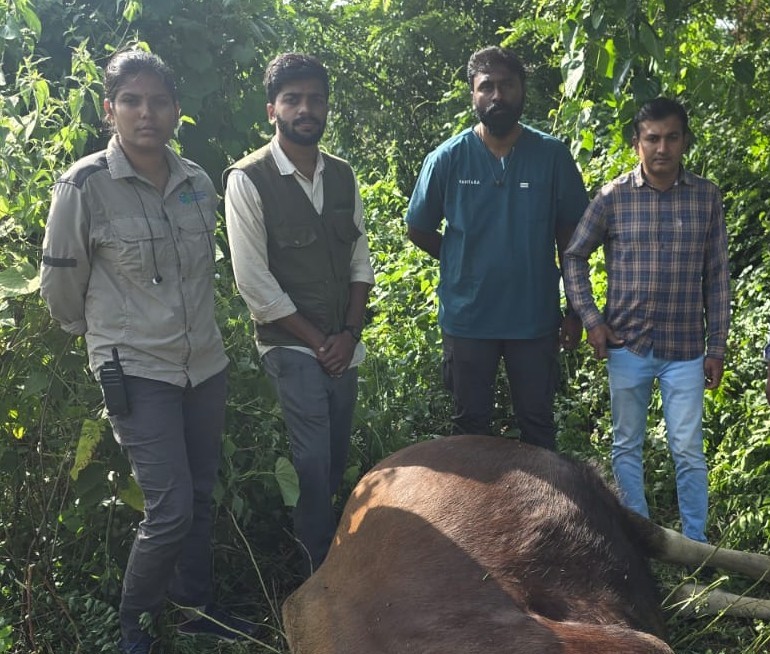
VIOLATIONS GALORE
It is shocking that no effort was made to ascertain whether this female Indian Gaur was pregnant or not, opines a retired wildlife veterinary doctor from Delhi. “A medical fitness test is a must for every animal before any darting operation is taken up. Further, before darting, the vet has to ensure there is no feeding for 24-hours and no water is given to the gaur for 12-hours before anesthesia is administered. Pregnant animals cannot either be darted under the WPA, 1972 as also under the CZA rules.”
Wildlife conservationists say, “Darting a pregnant Indian Gaur that has resulted in its death – is a serious offense under Indian laws. In fact, the Indian Gaur is listed as a Schedule-I species under the Wildlife Protection Act, 1972. The penalties are severe, given the protected status of the animal and the vulnerability associated with its pregnancy.”
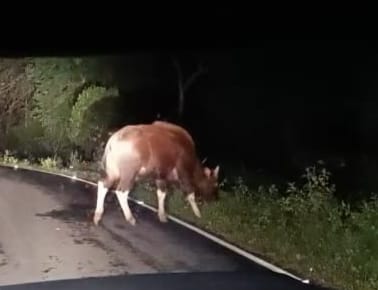
WILDLIFE PROTECTION ACT LEVIES SEVERE PENALTIES
Under the Wildlife Protection Act, 1972 (Section 51), the minimum punishment for causing the death of a Schedule-I species (such as Indian Gaur) is imprisonment for not less than 3 years, which may extend to 7 years, and a minimum fine of ₹25,000. For subsequent offenses, the punishment can be even higher, and the court can forfeit vehicles or weapons used in the operations.
Wildlife experts add, “If the death results from negligence or unauthorized action (such as improper tranquilization/darting), the penalties still apply irrespective of intent, as the law is strict about the protection of Schedule-I species. Other relevant laws are under the Prevention of Cruelty to Animals Act, 1960. Further, legal action under cruelty provisions may be taken, though the Wildlife Protection Act penalties are generally higher for Schedule I species.”
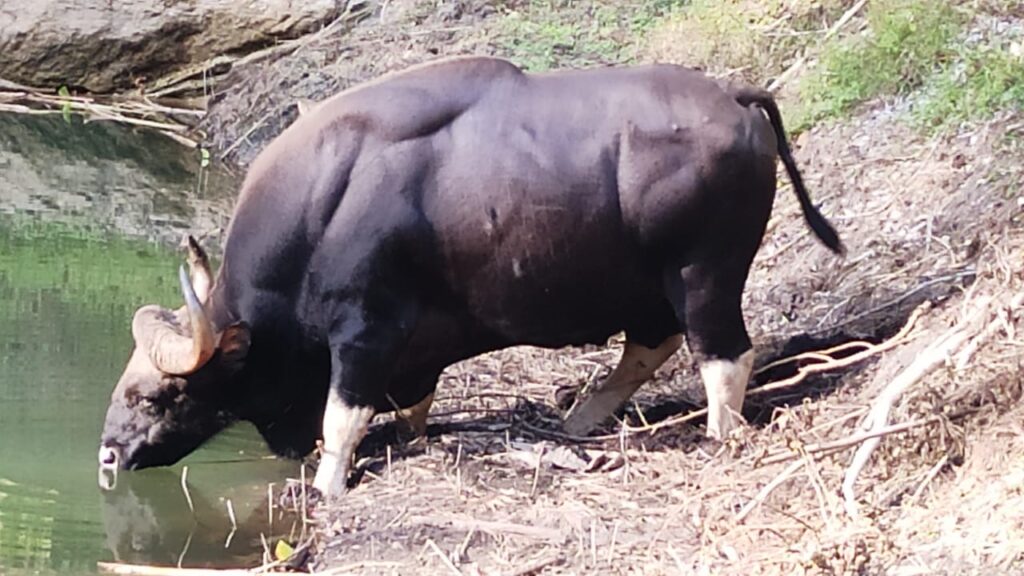
HIGHEST PROTECTION TO SCHEDULE-I SPECIES
The Indian Penal Code (Section 429) clearly says, “Causing death or maiming valued animals can attract up to five years’ imprisonment but wildlife laws take precedence for protected species. Special Provisions for Pregnant Animals’ Slaughter or harm to pregnant animals is specifically prohibited and is considered an aggravated offense, often leading to maximum sentences within the prescribed range.
If the unborn calf (foetus) is also killed in the process like it has in the case of Indian Gaur, separate penalties under the IPC (Section 316, causing the death of a ‘quick’ unborn child) can extend punishment up to 10 years and a fine in cases of culpable homicide by act against the mother.” Now will the state Forest Minister take appropriate action against BBP authorities and its vet who has caused the death of the Indian Gaur and its calf, it remains to be seen.
